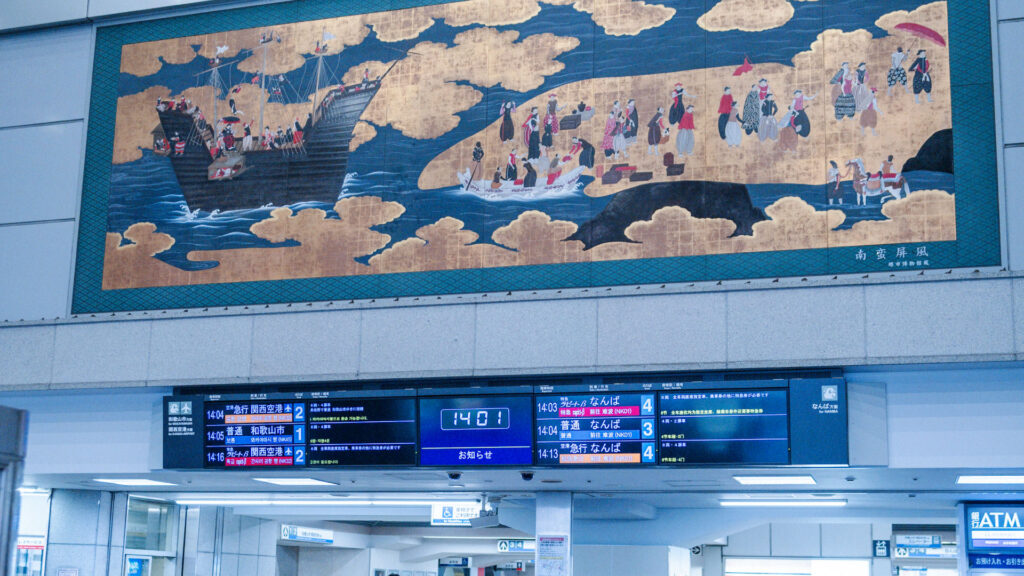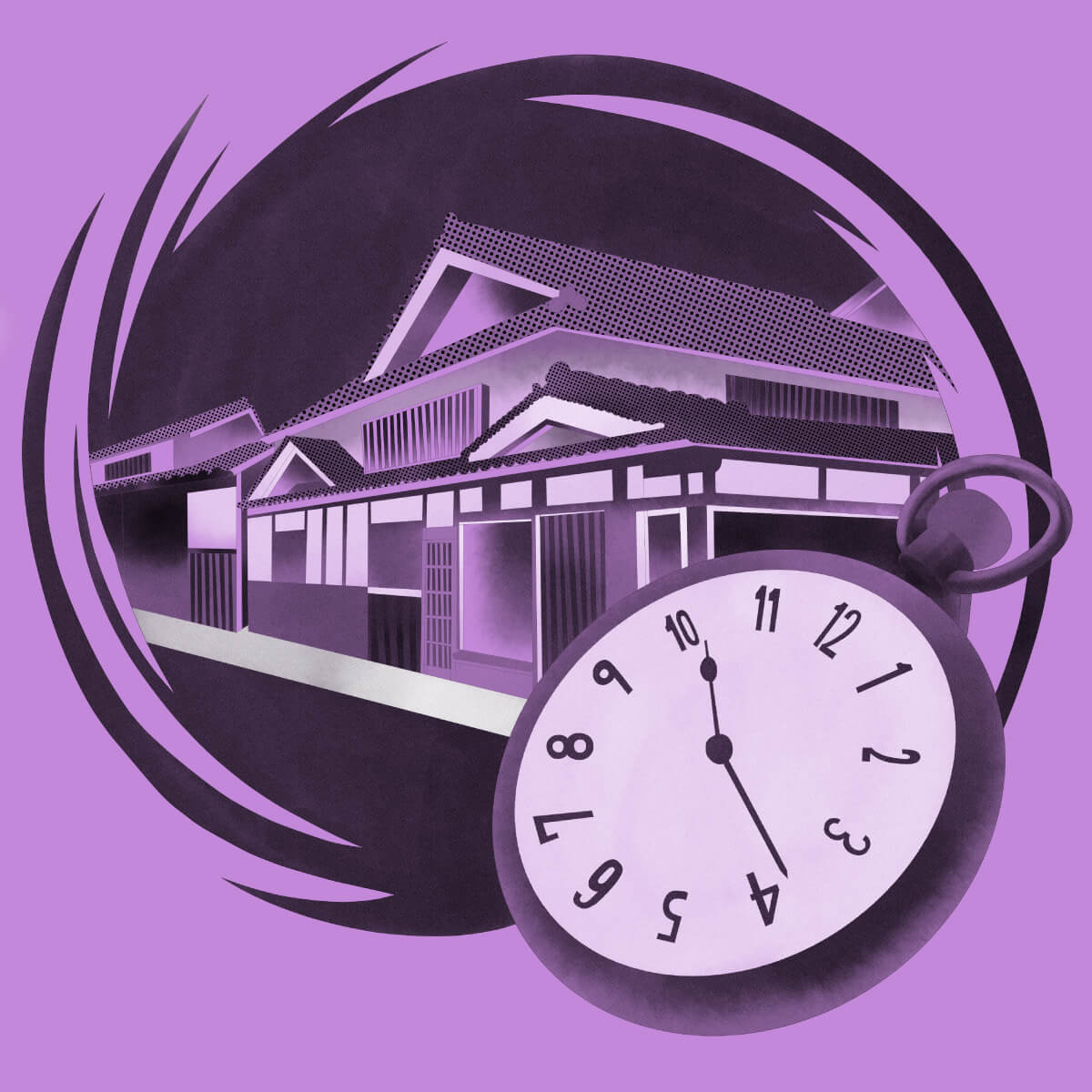
5 -The talented souls of Sakai
2024.03.28
-
 ON THE TRIPAn audio guide app to enhance your travel experienceJust like an audio guide in a museum, ON THE TRIP provide on-the-spot audio guides at shrines, temples, spectacular views, and sightseeing spots in any travel destination. Download the app and your smartphone becomes your own personal travel guide!
ON THE TRIPAn audio guide app to enhance your travel experienceJust like an audio guide in a museum, ON THE TRIP provide on-the-spot audio guides at shrines, temples, spectacular views, and sightseeing spots in any travel destination. Download the app and your smartphone becomes your own personal travel guide!
Audio Time Travel is an article that allows you to enjoy a trip to Osaka while listening to a guide. You can enjoy a part of the audio guide in this article. The full audio can be experienced on the ON THE TRIP app.
INTRODUCTION
The port city of Sakai once saw “golden days” of enormous fame and influence. But where are the traces of that era? You may not sense them upon arriving at Nankai Sakai Station. It makes sense, given that the station area is on land reclaimed from the sea. The coastline, as well as the port, were originally located further inland.
On this trip, we will uncover the story of Sakai’s golden age: its unique luminaries and their sophisticated pastimes, which include the tea ceremony. We may also see the dark corners that were hidden from such glittering prosperity.
10 | Kenpon-ji Temple’s Singer-Songwriter

If you follow the main street in front of the Sakai Plaza of Rikyū and Akiko eastward, you’ll find a temple named Kenpon-ji. Slumbering here is Takasabu Ryutatsu, Japan’s first singer-songwriter. Sakai created its take on the snakeskin shamisen instrument of the Ryukyu Islands. Snakeskin was a rare commodity; instead, makers used dog and cat skins to create shamisen. Despite being a monk, Ryutatsu played the shamisen and composed unique “ko-uta” ballads.
Kenpon-ji Temple possesses illustrations depicting Takasabu Ryutatsu as a wandering poet. His body of work could fill a jukebox, with over 500 songs to his name. Among them is his rendition of “Kimigayo,” a poem that went on to become the Japanese national anthem. Nowadays it is well known as a prayer for the Emperor’s long and prosperous reign, but in Ryutatsu’s day, it was actually treated like a love song.
11| The Forefather of Rakugo at Myoho-ji Temple

Sorori Shinzaemon, the father of “Rakugo” storytelling, is laid to rest at Myoho-ji Temple. In the past, Sakai was flush with entertainers. “Sorori” is an adverb meaning “smoothly and quietly,” but this name originates from his work as a sword sheath maker. He made scabbards that fit “smoothly and quietly” on any blade, even without measuring the blades in question. Manufacturing labor was neatly divided among many experts, so you can imagine how skilled they were.
Sorori was a master of Rakugo. He was also an “otogishu,” a mediator who counseled daimyo, or feudal lords. According to one theory, Daimyo Toyotomi Hideyoshi employed around 3,000 otogishu. Of all these mediators, he was fond of Sorori’s unique knack for conversation. During wartime, otogishu inspired the daimyo’s allies, holding conferences to demonstrate their lord’s authority, and crucially, writing speeches. For Hideyoshi, who was born a farmer and climbed to the top, a silver tongue was sharper than any steel.
12 | Terajicho Station

Let’s take our leave of Kenpon-ji Temple and return through the main street once known as the Kishu Kaido. Osaka’s last streetcar runs through here, which you can ride into Osaka proper.
Toyotomi Hideyoshi, Sen-no-Rikyū, and the merchants of Sakai were the protagonists of our story-focused tour through the vestiges of the golden days. And as the sun set on Toyotomi’s world, so too did it fade for Sakai, marking the end of the golden days.
War broke out in Edo between the Toyotomi clan and the Tokugawa clan, who undid the shogunate. Being Japan’s leader in firearm manufacture and distribution, Sakai received commissions from both armies, with 10,000 guns going to the Tokugawa clan, and 5,000 to the Toyotomi clan. Looking at those numbers, it seemed obvious who would win in the end, so the manufacturers asked the Toyotomi clan to pay in advance on one side while allowing the Tokugawa clan to pay later. But as they say, “Three may keep a secret, if two of them are dead.” The treachery incurred the wrath of the Toyotomi clan; if Sakai would deal with the enemy, then Sakai would burn. The resulting inferno burned so fiercely that it could be seen all the way from Osaka.
The Tokugawa clan helped rebuild Sakai after the razing, but the town would never reclaim its past glory. Prosperity and decline, both caused by firearms – perhaps that too was karmic justice. As gold dazzles, so too does it cast shadows. Perhaps the story of Sakai is imparting this message to us in the modern age.
*This guide was created based on documents and interviews and includes some interpretation done by us at ON THE TRIP. Theories differ between experts, so try to find out what really happened on your travels!
*Information presented here is current as of 2024. Please check the websites of the individual shops and facilities for up-to-date information on business hours.














